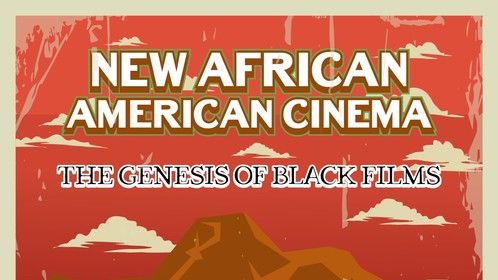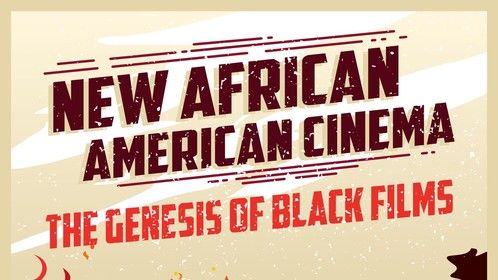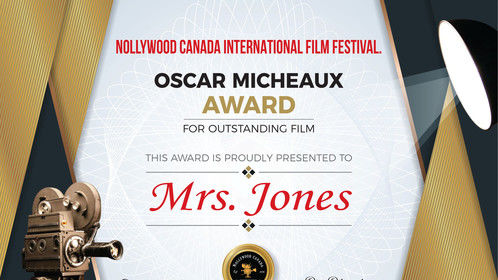About Orji
Life Experience
Achievements
Featured Projects
Loading featured projects...
Work Experience
Representation
Credits
-

Mrs. Jones (
2017 )
Film by Victoria Street Studios/Orji Obiorah (Thriller) Writer,Director,Producer,Actor This art-film explores the culture of marital infidelity in urban cities, and the harmony required in our racial, class, political and ideologically fragmented world of today. ''Mrs. Jones'' will propagate racial harmony amidst religious dogmata. Are humans monogamous, or polygamous by nature? Written by Orji Obiorah -

Gone Too Soon
Film (short) by Victoria Street Studios/Orji Obiorah Writer, Director, Cinematographer -

Hotel St Lucia
Film (short) by Victoria Street Studios/Orji Obiorah Writer, Director, Cinematographer -

Whites Were Blacks
by Victoria Street Studios/Orji Obiorah (Drama) Writer, Director, Actor This dialogic text is about the loss of identity. The mask presented in the text is the mask of the king mother (Queen Idia). Queen Idia was the mother of a powerful king in Benin kingdom who ruled from 1504 to 1550.This mask was taken from Nigeria by a British conqueror. The mask is still in England till this day. This is one of the few remaining evidence that my people (the Nigerian people) were not ''uncivilized savages'' before we were conquered and colonized. Only a brilliant and ''civilized'' artist can carve out such a beautiful mask from an ivory. This is what I call ''loss of identity.'' This is because of the fact that the mask is now a ''European'' property. PS: The mask is about to be auctioned for FIVE MILLION POUNDS! The stallion in this text is the ''Lipizzaner stallion.'' This horse which is named after a village in Slovenia is born black, but it grows up being white. The ''Lipizzaner stallion'' originated from Africa, but it was taken to Europe by the Moors of Africa. These extremely beautiful stallions are known as ''European Lipizzaner stallions'' today. This is what I call the loss of identity. This is because of the fact that these stallions had an African name which our African ancestors gave them. They lost this African name, and they also lost their God given home...which is Africa. What am trying to ''say'' in this text is that the fate of the conquered and enslaved Africans by Europeans is analogous to that of the horse and the mask. The identity of these conquered and enslaved Africans was destroyed by their captors who changed their names from ''Kintakunte or Obiorah'' to Michael Jackson or Oprah Winfrey. © OJ Obiorah 2011 -

The Black Flaneaur
Documentary by Victoria Street Studios/Orji Obiorah Writer, Director, Cinematographer The Black Flaneur'' is the presentation of Toronto city and its inhabitants (as well as objects like statues, flags, buses, trains, cars etc) through the eyes of a Black-Canadian flaneur (OJ Obiorah). After adopting the flanerie style of Dziga Vertov, Georg Simmel, Walter Benjamin, Siegfried Kracauer and Franz Hessel's idea of flanerie, I set out to film different parts of Toronto city for a period of one week. This piece is a hybridization of thoughts on one hand. It is a mixture of Georg Simmel, Walter Benjamin, Siegfried Kracauer and Franz Hessel's thoughts. On the other hand, the piece is a kind of homage to Dziga Vertov as a flaneur. Vertov is usually presented to us as a kind of documentary filmmaker. But the fact is that Vertov is also a flaneur. Therefore, my wondering around some part of Toronto-taking spontaneous shots- and later make a story out of it is just like what Vertov did in ''The Man with a Movie Camera.'' The mechanical recording of ''reality'' and making a creative use of it is the best way to describe Vertov as a Flaneur. By using a mechanical tool (camera) to present my perceived reality (just like Vertov), I am paying a homage to him as a flaneur. After seeing all my footage, I decided to use the piece to inspire an intellectual debate about the idea of Toronto's inhabitants being constantly absorbed in space (the skyscrapers are literally causing us not to be noticed whenever we walk pass them). Firstly, I used the millions of flickering neon lights and capitalist billboards in the piece to present the stimulating nature of Toronto's Dundas square shopping district. Secondly, I used the piece to inspire a debate about the culture of consumerism in Toronto city. Lastly, I redefined Hessel's idea of stimulus by highlighting how we are stimulated by graffities and other artistic means of communications (e.g. dancing). All in all, I must confess that the practice of flanerie enabled me to capture so many spontaneous moments as well as the Toronto's cityscape in an artistic manner. I noticed that I captured some artifacts and events which presented the artistic dimension of Toronto city which we usually do not notice-even when we see these things every day. I must confess that the practice of flanerie enabled me to present a romanticized Toronto which is lovely to look at, but also ominous at the same time. I can honestly say right now that after putting the piece together, I found out that a flanerie video actually contains several thoughts from different thinkers. I found out that in addition to Kracauer, Hessel, and Vertov's ideas, the piece also contains the idea of stimulus which Georg Simmel alluded to in the dissection of how mega cities affects the mental state of its inhabitants through his Geistesleben theory.
Education
-
York University
(2008-2012)











